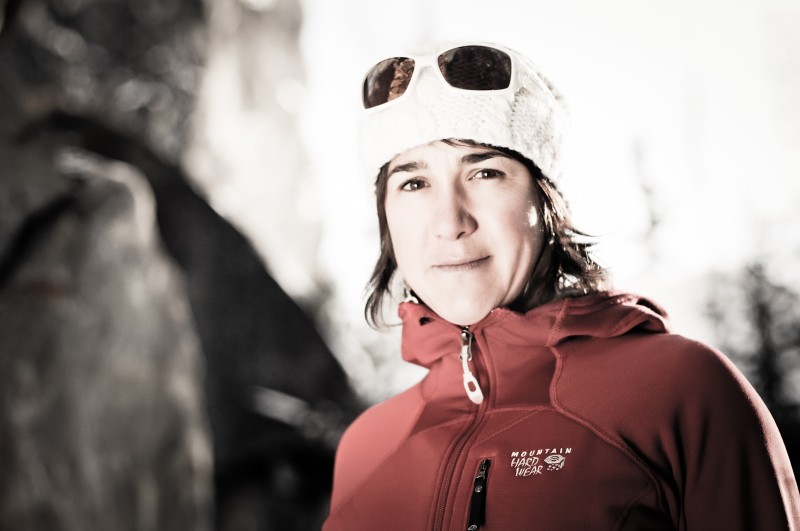
Sansoz said she fell in love with the sport at age 14 while climbing at Calanques in the south of France. Image courtesy of andyparant.com.
Liv Sansoz has been climbing since she was 14 years old, and except for a break she took 13 years ago to recover from an injury and gain her master’s degree in neurocognition, she’s kept with the sport for 22 years. The 36-year-old climber from Chamonix, France has racked up a number of competition titles, and became the second female to ascend a 5.14c in the states. In addition to climbing, she has experience skiing, mountaineering, BASE jumping, running, and paragliding. Needless to say, we’re impressed.
Q. Why did you first start climbing?
A. I grew up in the mountains and I have always been hiking and climbing small boulders, jumping from big boulder to big boulder in the Glacier River and hunting for crystal rocks at the base of the glaciers. When I was 10 I started to do lots of backcountry skiing […] with my dad. I loved it and felt attracted to climbing rocks. That’s why when I was 14 I asked my parents to get me in the local climbing association so I could climb rocks for real and not only scramble. On the first week at the climbing association, we went climbing at the Calanques in the south of France. It’s a beautiful, white limestone above the Mediterranean Sea and I completely fell in love with climbing. I made massive progress in two years. […] I got involved in the senior national French team at the age of 16.
Q. What is your most memorable climb?
A. I have a lot of memorable climbs, but here is one that feels like yesterday: it’s about Hasta la Vista—a 5.14c route in Mount Charleston in Nevada. It was back in 2000 and at that time there was a woman, Josune Bereciartu, and myself, who were able to send such hard routes. I’d been working on Hasta la Vista for two weeks already and I kept falling at the same hazardous, tricky, dynamic move to reach a very narrow hold. I knew if I could make this move, I would send the route.
It was my last day in the states—I had to fly the next day. I asked my friend Andrew if he would come and belay me very early in the morning since it was supposed to rain by late morning. We went to the crag at 6 a.m. and I did one route to warm up. It started to rain a little bit. I was very skeptical with the conditions. When you try a hard route, everything must be perfect. Dry and cold rock improve the “smearing” of your skin in the rock and help a lot. Anyway, the rain finally stops. I waited a little bit and decided I should go. I’d been falling on that same move more than 12 times and I was really hoping I could do it that day. I did the long and not easy traverse, arrived to the crux—and grabbed the narrow hold without falling! It was like a de-charge of emotion followed by another type of feeling—I still had to do the other half of the route and had the pressure of falling after passing what was, for me, the crux. I was getting close to the anchor. There was another small crux at the top. Suddenly, I lost a bit of lucidity and could not find my beta. I had to stay still for minutes, that to me seemed like an eternity—fighting with my own emotions while trying to remember the sequence, the foot holds, [and so on]. But the doubt was there. Finally, starting to feel I could not stay any longer because my arms were exhausted, I used all the energy I had and then some. I did not suspect that I had become the second female to ever ascend a 5.14c in the states. When I got back to the ground, I could not speak. I had tears in my eyes.
Q. What is the most dangerous thing you’ve experienced while climbing?
A. Rock falls in alpine or big wall climbing. First, you hear this terrific noise and your brain knows you might die. Everything is happening extremely fast. In less than a second you have already moved to try to protect yourself as best you can, and hope that your climbing partner will be fine. And the next second, it’s the silence again. All of your body is [tensed and relieved] at the same time.
Q. What competitions have you won?
A. I think I have been on 50 international podiums, but to make it short, I won the World Championship in Senior twice—in 1997 in Paris and 1999 in Birmingham—then the Overall World Cup three times (1996, 1998, 2000). It’s been a while now. I loved competing years where I learned a lot about training, dealing with stress and pressure, about how to surpass myself, and about myself too. I’m very happy I have moved more in the alpine scene now, using the same skills and having the same motivation for climbing [I had] 20 years ago.
Q. Can you tell me a bit about your life outside of climbing, as well as your interests in BASE jumping and mountaineering?
A. I have found a good balance between my other works (writing, doing some PR, being a consultant for Mountain Hardwear) and being in the mountains. I don’t have a precise schedule. I’m a weather- and conditions-dependent person. If weather is good and conditions are great for certain climbing routes or ski descents, I’ll give the priority to that. I work when I’m back, sometimes really late. I always do the work on time, but also go in the mountains as much as possible.
I have the luck to live in Chamonix where you have everything on-hand. For instance, I can go skiing on incredible powder up on the glacier with the first lift, get back down and start work with motivation and a smile. When I want to go for something serious, I stop thinking “work” and I only focus on the project and getting enough sleep. If snow is not good and if I don’t have the time for an outside climb, I’ll go paragliding or BASE jumping or just running in the forest. I love to live with the seasons, to play with the terrain, and to use all the toys I have to enjoy the mountains. I love to combine some alpine climbs with BASE jumping or a paragliding flight. Obviously on rainy or bad weather days, I work as much as possible. Also, I enjoy switching from my athlete job and get nicely dressed for some appointments and stop thinking or talking “mountains.”
Q. What climbing goals do you have for the future?
A. I’ve never been to Patagonia, so the next trip will be there this December and January. I’ll team up with Janet and Freddie Wilkinson from New Hampshire and also Mountain Hardwear athletes. [Janet and I have] climbed together in the past, and realized we should go for something bigger. We’re looking to climb Fritz Roy. We’ll decide on the line once we get there, depending on the conditions. Most of the time, a woman is climbing with a man. I find it great and different to be a party of two women. We speak more, we make decisions together, and we have to rely on ourselves. When you climb with a man, it’s great, but most of the time he will be the one making decisions, with the woman following. I’m not saying it’s not great to climb with a man, it’s just different. It has a different taste to be a party of two women on a big face. Freddie will be there to document the story since we would like to be able to make a short film and share our adventure.
Q. What would you say to entice someone to try climbing for the first time?
A. Climbing is really fun. To enjoy it to the fullest, it’s great to start in beautiful places with really easy routes. If you start with a route too hard to begin with, you’ll struggle and won’t like it. The people you are going with are also a really important factor. Going with someone who is very serious about safety and who is very friendly is best. You’ll make good friends in a short time. Climbing can be very rewarding. Sometimes you’ll think, “I’m not going to be able to grab the next holds,” and then you put a foot higher and you do the move, and the next one and again the next one, and you finally send the route.
Q. What is it about climbing that you love?
A. On expeditions you are carrying heavy loads, you are sleeping in tents for weeks, you can’t shower, you eat the same dehydrated food. You can suffer from the cold, from the altitude sometimes, and from the tiredness. But you feel more alive than in any other moment. You feel the mountains, the energy. You feel you’re vulnerable and powerful at the same time. You are aware of everything around you. Climbing and especially climbing in big mountains or faces brings a high sentiment of freedom—of being alive. It [can] seem weird to hear, but I would not be myself without climbing.
To learn more about Sansoz, check out her website.
- Liv Sansoz (right). Image by Marc Daviet for Julbo.
- Liv Sansoz. Image by Marc Daviet/Mountain Hardwear.
- Liv Sansoz. Image by Marc Daviet/Mountain Hardwear.
- Liv Sansoz. Image by Marc Daviet/Mountain Hardwear.
- Liv Sansoz BASE jumping. Image by Erwan Chevalerias.
- Liv Sansoz climbing Calanques. Image by Pascal Tournaire.
- Liv Sansoz finishing climbing Calanques at night. Image by Pascal Tournaire.
- Sansoz paragliding over Chamonix peaks. Image courtesy of Liv Sansoz.
- Sansoz paragliding in Chamonix. Image courtesy of Liv Sansoz.
- Sansoz on the top of Aiguille Verte, a mountain in the Mont Blanc massif in the French Alps. Image courtesy of Liv Sansoz.
 Your Privacy Choices
Your Privacy Choices

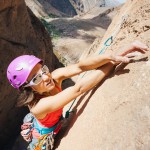
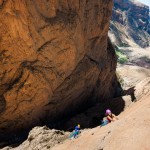
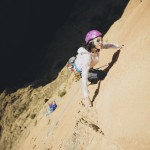
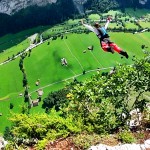
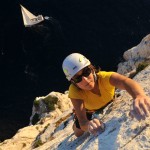

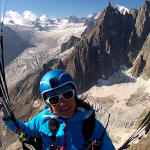
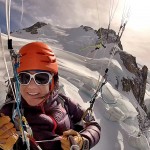
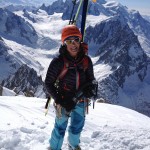
 The
The